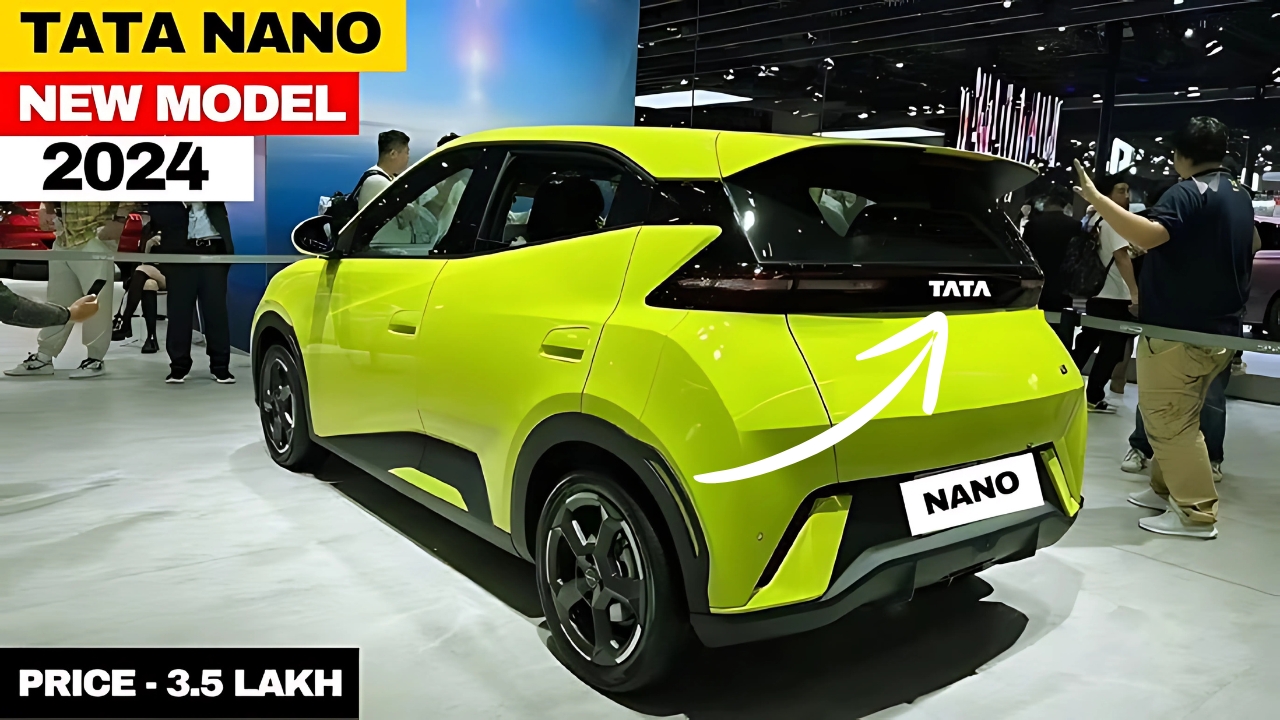In the bustling streets of India, a familiar name is making waves once again.
The Tata Nano, once hailed as the world’s cheapest car, is poised for a comeback.
But this time, it’s not just about affordability—it’s about revolutionizing the electric vehicle (EV) landscape in one of the world’s fastest-growing automotive markets.
A Brief History: The Rise and Fall of the Original Nano
When Ratan Tata unveiled the Tata Nano in 2008, it was a bold statement.
Priced at just one lakh rupees (approximately $2,000 at the time), it promised to put four wheels within reach of millions of Indian families.
The tiny car captured global attention, but its journey was far from smooth.
Despite initial excitement, sales never met expectations. Safety concerns, quality issues, and an unfortunate association with “cheapness” plagued the Nano.
By 2018, production had all but ceased, and many thought the Nano’s story had ended.
The Electric Revolution: A Second Chance for the Nano
Fast forward to 2024, and the automotive landscape has changed dramatically.
Electric vehicles are no longer a novelty but a necessity in the fight against climate change.
India, with its ambitious goals for EV adoption, presents a unique opportunity—and challenge.
Enter the new Tata Nano EV.
Leveraging years of experience in the EV sector with models like the Nexon EV and Tiago EV, Tata Motors is reimagining the Nano for the electric age.
But can this reincarnation succeed where its predecessor struggled?
Design and Features: More Than Just a Facelift
The 2024 Tata Nano EV retains the compact dimensions that made the original a marvel of engineering.
At just over 3 meters long, it’s still perfect for navigating crowded city streets. But that’s where the similarities end.
The new Nano sports a modern, upscale design that sheds the “cheap car” image.
LED headlights, alloy wheels, and a sleek grille give it a premium feel.
Inside, a digital instrument cluster and a touchscreen infotainment system bring the Nano firmly into the 21st century.
Safety, a critical concern for Indian consumers, has been addressed head-on.
The new Nano boasts a reinforced body structure, dual airbags, and ABS as standard.
It’s a far cry from the barebones original and reflects Tata’s commitment to changing perceptions.
Power and Performance: Small Car, Big Ambitions
Under the hood—or rather, under the floor—lies the heart of the new Nano.
A 20 kWh lithium-ion battery pack provides a claimed range of 200-250 kilometers on a single charge.
While not groundbreaking by global standards, it’s more than adequate for urban Indian driving conditions.
The electric motor delivers instant torque, making the Nano surprisingly zippy in city traffic.
With a top speed limited to 100 km/h, it’s not meant for highway cruising, but that’s hardly the point.
This is a car designed for the daily commute, the school run, and the weekend grocery trip.
Charging options include a standard home charger and fast-charging capability.
Tata claims the battery can be charged from 0-80% in just under an hour using a fast charger—perfect for a quick top-up while shopping.
Pricing and Positioning: The Affordability Factor
Perhaps the most crucial aspect of the new Nano is its price.
Tata is targeting a starting price of around 5 lakhs (approximately $6,000), making it one of the most affordable EVs not just in India, but globally.
This aggressive pricing is made possible by local manufacturing, government incentives for EVs, and Tata’s economies of scale in battery production.
It positions the Nano EV as an attractive option for first-time car buyers and those looking to make the switch to electric without breaking the bank.
Market Impact and Competition
The launch of the Tata Nano EV has sent ripples through the Indian automotive industry.
Competitors are scrambling to develop their own affordable EVs, but Tata’s head start gives it a significant advantage.
For urban dwellers, the Nano EV presents a compelling alternative to two-wheelers.
It offers the safety and comfort of a car with running costs comparable to a scooter.
This could potentially accelerate India’s transition to four-wheeled mobility.
Challenges and Opportunities
Despite its promise, the Nano EV faces challenges.
Charging infrastructure in India remains limited, especially in smaller cities and rural areas.
Range anxiety is a real concern for many potential buyers.
Tata is addressing these issues through partnerships with charging network providers and by offering home charging solutions.
The company is also working on educating consumers about the benefits of EVs and dispelling common myths.
The Road Ahead: A Vision for Sustainable Mobility
The Tata Nano EV represents more than just a product launch—it’s a vision for the future of mobility in India.
By making electric vehicles accessible to a broader segment of the population, Tata aims to accelerate the country’s transition to sustainable transportation.
If successful, the Nano EV could become a case study in how to democratize electric mobility in emerging markets.
It could also serve as a blueprint for other countries grappling with similar challenges of urbanization, pollution, and the need for affordable transportation.
New Tata Nano : A New Beginning
As the Tata Nano EV hits the streets in 2024, it carries with it the hopes of millions of Indians dreaming of affordable, sustainable mobility.
It’s a second chance for an iconic brand and a bold step towards a cleaner, greener future.
Whether the new Nano will succeed where its predecessor faltered remains to be seen.
But one thing is clear: in reimagining the world’s cheapest car as an accessible EV, Tata Motors has once again captured the world’s attention.
The road ahead may be long, but for the Nano, the journey has just begun.
